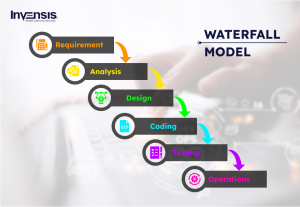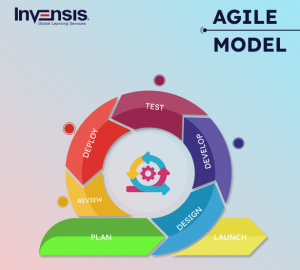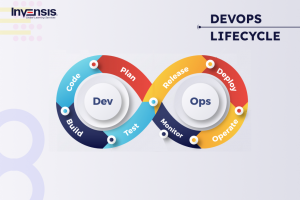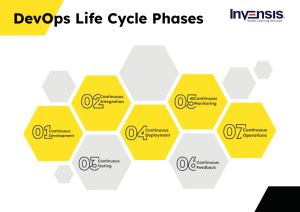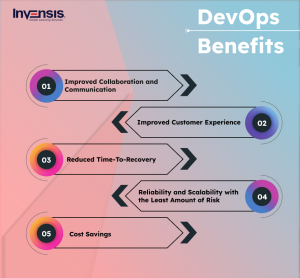
DevOps is one of the latest buzzwords in the IT industry. It is rising in popularity and is being adopted by many organizations because of its various benefits over traditional approaches. DevOps Foundation certification ensures an enhanced knowledge and understanding of DevOps terminology, principles, and other key aspects for business success. So, in this article on “What is DevOps Lifecycle? Definition, Phases, and Tools Used,” we will talk about the basics of DevOps and understand the DevOps Lifecycle. If this sounds intriguing, read the blog till the very end. Now, let us start by understanding what exactly DevOps is.
What is DevOps?
DevOps is a set of cultural concepts, practices, and tools that improves an organization’s ability to create applications and services with a higher velocity, improving productivity than traditional software development and infrastructure management methods.
DevOps is a collection of methods that bring together software development (Dev) and IT operations (Ops). Its goal is to minimize the systems development life cycle and continually provide high-quality software delivery. As a result, organizations can provide better service to their customers and compete in the market because of this speed and efficiency.
Compared to traditional methods, DevOps brings together development and operations to improve software development and delivery efficiency, speed, and security.
To explain in simple terms, people working together to develop, produce, and deploy reliable software at a higher speed is what DevOps is all about. Through automation, collaboration, rapid feedback, and iterative improvement, DevOps principles enable software developers (Devs) and operations (Ops) teams to accelerate the delivery of the products or software.
The DevOps delivery method builds on the cross-functional approach of creating and deploying faster and more iterative applications, which stems from an Agile approach to software development. Adopting a DevOps development method means enhancing the application’s flow and value delivery by promoting a more collaborative atmosphere throughout the development cycle. So now you have some idea about DevOps. Now, let us understand why organizations use DevOps and the drawbacks of traditional approaches that DevOps helped.
Why DevOps?
Before DevOps, the waterfall and agile models were very prominent in software development, but these models had a few drawbacks. So, let us first discuss these models to understand the topic better.
Waterfall Model
The waterfall model is a top-down sequential procedure for developing a system or software. It is an easy-to-understand and linear model. So, defining requirements, software design, implementation, testing, deployment, and maintenance are all phases of the waterfall methodology. Each phase happens one after the other in sequential order. So, for example, after understanding the clients’ fundamental requirements, the teams will move on to the next phase and design the software or products.
So, software development organizations that used the waterfall model had to dedicate significant time to optimizing their product. That’s because you can’t go on to the next step unless you finish the previous one.
This methodology was only appropriate for projects with well-defined requirements, which means that requirements will not alter over time. However, this is an extremely rare scenario in today’s world because requirements are always changing. This is one of the drawbacks of the waterfall model.
Agile Model
Agile methodology is a development and testing strategy that encourages continuous iteration throughout the project’s software development life cycle. Unlike the Waterfall methodology, development and testing are done simultaneously. Now, while the Agile method increased development agility, it missed Operations which had not yet caught up with agile principles. As a result, the development process and release of the updates slowed due to a lack of coordination between developers and operations engineers. Organizations had begun to see the need for greater team cooperation and faster software delivery.
So this gave rise to the DevOps methodology. DevOps provided continuous software delivery with fewer and easier-to-fix problems, and it also provided faster problem resolution. The Development and Operations Team works hand in hand with the DevOps Methodology, which results in a healthy working atmosphere, efficiency of team members, improved communication between them, and so on. This is why many organizations are increasingly adopting DevOps practices and tools. Now, let us discuss today’s main topic and understand DevOps Lifecycle.
DevOps Lifecycle
DevOps Lifecycle is a methodology software development teams use to bring products to market faster and more efficiently. It manages the entire software lifecycle, from development to release, focusing on the developer and IT operations collaboration. The DevOps lifecycle includes continuous software creation, development, verification, release, and management.
The DevOps strategy promotes innovative thinking, speed, and adaptability in software applications’ production, verification, use, and development. A spirit of innovation, review and continuous improvement is encouraged to innovate goods, services, and operations. Adopting DevOps necessitates a thorough understanding of the various stages of the DevSecOps lifecycle.
To produce quick results, engineers should be fully informed of all stages of the DevOps lifecycle. The complete development approach can be time-consuming and difficult when they are not. As a result, every aspect of the DevOps lifecycle is dissected and analyzed in depth here.
Plan
During the planning phase, DevOps teams develop ideas, define, and describe the features and functions of the applications and systems they are building. Then, they keep track of progress at low and high levels of detail, from tasks that only involve one product to tasks that involve a portfolio of products. Finally, DevOps teams plan flexibly and transparently by making backlogs, keeping track of bugs, managing agile software development with Scrum, using Kanban boards, and using dashboards to see how things are going.
Code
This stage is pretty straightforward. The code development takes place at this stage. Many good practices such as Git enable the code to be used, which ensures writing the code for business, helps to track changes, gets notified about the reason behind the difference in the actual and the expected output, and, if necessary reverting to the original code developed. In addition, the code can be appropriately arranged in files, folders, etc., and they can be reused.
Develop
The development phase includes all aspects of coding, such as team members writing, testing, reviewing, and integrating code and transforming that code into artifacts that can be deployed in various environments. DevOps teams strive to innovate quickly while maintaining quality, stability, and productivity. They accomplish this by employing highly productive tools, automating mundane and manual tasks, and iterating in small increments via automated testing and continuous integration.
Test
Continuous integration (CI) enables multiple developers to contribute to a single shared repository during this phase. Automated tests are run when code changes are merged to ensure correctness before integration. Merging and testing code frequently assist development teams in gaining confidence in the quality and consistency of code once deployed.
Release
Deployment to an environment can be done by automation. However, when the deployment is made to the production environment, it is done manually. Many release management processes are commonly used to deploy in the production environment to reduce customer impact manually.
Deploy
Continuous deployment (CD) enables teams to regularly automate the release of features into production. Teams can also use feature flags to gradually and methodically deliver new code to users rather than all at once. This method increases software development teams’ velocity, productivity, and sustainability.
For automated deployment, many systems can support the scheduler. Furthermore, by deploying dashboards, users can capture accurate insights and view the optimization scenario and analytics on trends.
Operate
During the operating phase, applications are maintained, monitored, and problems are fixed in production environments. Teams that use DevOps practices work to ensure that systems are reliable, have high availability, and have no downtime. They also work to improve security and governance. Also, DevOps teams try to find problems before they affect the customer experience and work quickly to fix problems when they do happen. To keep this level of vigilance, you need a lot of sensor data, alerts you can act on, and full visibility into applications and the system underneath them.
Constant Feedback
The DevOps team should look at each release, and a report should be made to help improve future releases. By getting feedback all the time, teams can improve their processes and use customer feedback to improve the next release.
Phases of DevOps Lifecycle
The lifecycle of DevOps optimizes development processes from beginning to end and engages the organization in continuous development, resulting in faster delivery times. This stage of the DevOps lifecycle mainly consists of the following seven stages.
Continuous Development
The continuous development phase is a phase in which the program is ‘planned’ and ‘coded .’ The development phase includes all aspects of coding, including team members’ authoring, testing, integrating code, and converting that code into build artifacts deployed in various environments. DevOps teams aspire for rapid innovation while maintaining quality, stability, and productivity. They accomplish this by utilizing highly productive tools, automating repeated and manual tasks, and iterating in smaller increments with the help of automated testing and continuous integration.
Now, talking about the tools used in this phase, no DevOps tools are necessary for planning. However, tools are required to maintain the code. The codes written in any language are kept updated using version control technologies. Source Code Management is the process of maintaining the code. The most used tools in this phase are Git, SVN, Mercurial, CVS, and JIRA.
Continuous Testing
The testing step of the DevOps lifecycle examines the created code for errors and faults. This is where qualitative analysis comes in handy for ensuring that the generated software is usable. The Quality Assurance(QA) process must be completed successfully to determine whether the software meets the client’s requirements. This assures that the generated program has no defects in terms of functioning. Furthermore, in continuous testing, docker containers are utilized to simulate the full test environment.
A Docker container is a lightweight executable package that contains everything needed to execute a program, including system tools, libraries, runtime code, and settings. Next, make the code work in different environments using docker. This was about continuous testing. Now, moving on to our next phase and talking about continuous integration.
Continuous Integration
This is the most important step in the DevOps lifecycle. Continuous Integration is a software development approach that requires developers to submit the source code changes more often. It is done once a day or once a week. Code building includes compilation and code review, unit testing, integration testing, and packaging.
The new functionality’s code adds to the existing code. So now, the updated code is integrated with the systems to represent the end-users changes because the software is updated regularly. So this was about continuous integration. Now, moving on to our next phase and talking about continuous deployment.
Continuous Deployment
The continuous Deployment(CD) stage ensures the products are deployed smoothly without impacting the application’s performance. This technique eliminates the need for planned releases and speeds up the feedback system, allowing developers to respond to concerns faster and more accurately. In addition, through configuration management, containerization solutions help in continuous deployment.
In the continuous deployment phase, configuration management is quite important. It entails establishing and maintaining the app’s functional requirements consistently. Popular DevOps tools used in this phase include Ansible, Puppet, and Chef, which help execute quick deployment of new code. This was about Continuous Deployment. Now, moving on to our next phase and talking about continuous monitoring.
Want to get to know the differences between two important phases of the DevOps Lifecycle? Check out Continuous Delivery vs. Continuous Deployment.
Continuous Monitoring
It is one of the most important stages of the DevOps lifecycle. Monitoring a software product’s performance is critical for determining the overall effectiveness of the product’s output. Through constant monitoring, developers can find general patterns and parts in the program that require more attention. Continuous monitoring is an operational phase aiming to improve the software application’s overall efficiency. Furthermore, it keeps track of the app’s performance. Some of the prominent tools used in this phase are Splunk and Nagios. This was about the continuous monitoring phase.
Continuous Operations
All DevOps operations are built on continuity, with complete automation of the release process, allowing the organization to continue reducing overall time to market.
The discussion clarified that continuity is a critical factor in DevOps in removing steps that frequently distract development, take longer to detect issues and result in a better product version after several months. As a result, we can use DevOps to improve the efficiency of any software product and increase the overall number of interested customers in your product.
Continuous Feedback
The application development process is constantly improved by analyzing the results of software operations. This is accomplished by establishing a critical phase of constant feedback between operations and developing the next version of the current software application.
Continuity is an important factor in DevOps because it eliminates the unnecessary steps required to remove a software application from development, test it, and then produce a better version. But, unfortunately, it kills the app’s efficiency and reduces the number of interested customers.
Benefits of DevOps
The benefits of DevOps for business can assist interdisciplinary, autonomous, and small teams in working together to achieve common goals. By combining efforts, automating processes, and responding to input from all stakeholders and teammates, we can move closer to product quality and faster delivery. Because of competing and conflicting priorities that may compromise product quality and speed, adopting the DevOps culture becomes critical for an organization. Some of the DevOps benefits:
1. Improved Collaboration and Communication
DevOps entails a significant cultural transformation that eliminates communication barriers and allows people to cooperate and share resources more effectively. Furthermore, the most effective DevOps team members recognize the need for collaboration.
2. Improved Customer Experience
DevOps deepens customer engagement by creating useful applications more responsively. With the collaborative effort, all applications are developed quickly with utmost care for their needs and wants. In addition, the DevOps integrated cultural foundation provides the end-users with efficiency and regularly improves to maximize customer satisfaction.
3. Reduced Time-To-Recovery
DevOps approaches help reduce the overall efficiency effect of bottlenecks, rollbacks, and deployment failures. However, when mistakes do occur, it takes less time to recover from them. DevOps Approaches help shorten the development cycles, help reduce the time taken to detect errors, and publish new versions more often.
4. Reliability and Scalability with the Least Amount of Risk
It’s crucial to maintain dependability during a busy schedule. However, under additional pressure, processes and systems may become more challenging. That is why it is critical to design a complete plan focusing on stability, scalability, and the capacity to sustain further expansion. DevOps allows teams to deploy new software in a distributed context while securing current on-premises data swiftly.
5. Cost Savings
DevOps efforts create innovations that add value to the company and save money on maintenance and upgrades by avoiding needless investment and reducing project complexity and overruns. A complete DevOps strategy, in theory, may help a company reduce expenses and boost profitability.
Conclusion
Today, more organizations are implementing the DevOps lifecycle to optimize the entire software development process. The DevOps process involves business users, developers, test engineers, security engineers, and system administrators. All work with a common goal to focus on meeting client needs. To effectively deploy code more often while keeping your systems running, you must be able to monitor any changes in your environment accurately.
Individuals and corporate teams interested in efficiently integrating DevOps into their organizations may consider enrolling in our DevOps Courses.
We at Invensis Learning provide DevOps Foundation certification, accredited by DevOps Institute. The certification covers all the fundamental concepts, key principles, and core terminology related to DevOps for business success. We also provide interactive instructor-led DevOps Foundation certification training by highly qualified, certified, and accredited trainers and have a 97% pass success rate.
Some of our other popular industry-recognized DevOps courses are:
- DevOps Foundation Certification
- Observability Foundation Certification
- DevOps Professional Certification
- DevOps Master Certification


